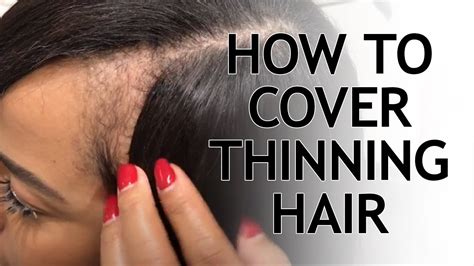Introduction
Thin hair is a common concern for many individuals, affecting both men and women. The condition can arise due to various factors, including genetics, hormonal changes, aging, medical treatments, and environmental stressors. Thin hair can significantly impact one’s self-esteem and confidence. Fortunately, hair weaving offers a viable solution for those seeking to restore the fullness and volume of their hair.

What is Hair Weaving?
Hair weaving is a non-surgical hair extension technique that involves attaching individual strands of human or synthetic hair to the client’s natural hair. These extensions are typically woven onto existing hair using a special tool or needle. The process creates the illusion of thicker and fuller hair without damaging the natural scalp or hair follicles.
Benefits of Hair Weaving for Thin Hair
Hair weaving offers numerous benefits for individuals with thinning hair:
- Increased Hair Volume and Thickness: Hair weaving immediately adds volume and thickness to the hair, creating a fuller and more youthful appearance.
- Improved Appearance: By concealing areas of thinning hair, hair weaving enhances the overall appearance of the hair, making it look healthier and more aesthetically pleasing.
- Versatile Styling Options: Hair weaving allows for versatile styling options, enabling individuals to experiment with different hairstyles and colors to achieve the desired look.
- Minimal Damage to Natural Hair: Unlike other hair extension methods, hair weaving involves minimal damage to the natural hair. The extensions are attached to the existing hair strands, avoiding direct contact with the scalp.
- Long-Lasting Results: Hair weaving can last for several weeks to months, depending on the maintenance and care taken.
Types of Hair Weaving
There are various types of hair weaving techniques, each with its unique characteristics:
- Micro-Weaving: This technique involves using very small sections of hair and extensions, creating a natural and long-lasting bond.
- Macro-Weaving: This technique uses larger sections of hair and extensions, resulting in a more dramatic and voluminous effect.
- Fusion Weaving: This technique attaches extensions to the natural hair using heated keratin bonds, providing a strong and secure hold.
- Tape-In Weaving: This technique involves using pre-taped hair extensions that are adhered to the natural hair, offering a quick and easy application process.
Choosing the Right Hair Weaving Technique
The choice of hair weaving technique depends on the individual’s hair type, desired outcome, and lifestyle. It is advisable to consult a professional hair stylist to determine the most suitable method for your specific needs.
Maintenance of Hair Weaves
To ensure the longevity and health of hair weaves, proper maintenance is crucial:
- Regular brushing and combing to prevent tangles
- Gentle washing and conditioning using sulfate-free products
- Avoiding heat styling as excessive heat can damage the extensions
- Regular visits to a hair stylist for professional maintenance and touch-ups
Hair Weaving for Special Occasions
Hair weaving is not only suitable for daily wear but also provides a versatile solution for special occasions. Whether it’s a wedding, prom, or a formal event, hair weaving can elevate the overall look and enhance confidence.
Common Myths About Hair Weaving
There are several common myths associated with hair weaving that should be addressed:
-
Myth: Hair weaving damages the natural hair.
Fact: When performed correctly by a professional, hair weaving does not damage the natural hair. -
Myth: Hair weaves are uncomfortable to wear.
Fact: Modern hair weaving techniques are designed to be comfortable and lightweight, ensuring minimal discomfort. -
Myth: Hair weaves can only be used on long hair.
Fact: Hair weaving can be applied to hair of various lengths, including short hair.
FAQs
Q: How long does hair weaving last?
A: Hair weaving can typically last for several weeks to months, depending on the maintenance and care taken.
Q: Will hair weaving damage my natural hair?
A: When performed by a professional, hair weaving does not damage the natural hair. However, it is important to follow proper maintenance practices to ensure hair health.
Q: Can I style my hair weave as I wish?
A: Yes, hair weaves can be styled in various ways, including blowouts, curls, and updos. It is recommended to avoid excessive heat styling to preserve the longevity of the extensions.
Q: How often should I get my hair weave touched up?
A: Regular touch-ups are necessary to ensure the weave remains secure and the hair is healthy. Consult a professional to determine the frequency of touch-ups required.
Statistics and Facts
- According to the American Hair Loss Association, over 40% of women experience hair loss by the age of 40.
- The global hair extensions market is projected to reach $15.7 billion by 2029, indicating the growing demand for hair weaving and other hair extension solutions.
- Research conducted by the Trichological Society found that hair weaving can significantly improve self-esteem and confidence in individuals with thinning hair.
Conclusion
Hair weaving is a non-surgical and effective solution for individuals with thinning hair. It offers numerous benefits, including increased hair volume, improved appearance, versatile styling options, minimal damage to natural hair, and long-lasting results. By choosing the right technique and following proper maintenance practices, individuals can enjoy the confidence and satisfaction of fuller and healthier-looking hair.
